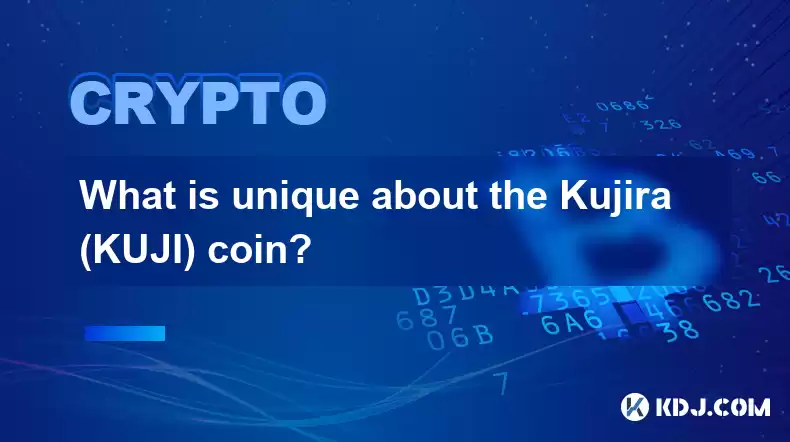-
 Bitcoin
Bitcoin $119900
0.91% -
 Ethereum
Ethereum $4576
8.55% -
 XRP
XRP $3.264
4.05% -
 Tether USDt
Tether USDt $0.9998
-0.05% -
 BNB
BNB $834.7
4.17% -
 Solana
Solana $191.8
9.96% -
 USDC
USDC $0.9998
-0.02% -
 Dogecoin
Dogecoin $0.2363
6.08% -
 TRON
TRON $0.3525
2.56% -
 Cardano
Cardano $0.8419
9.12% -
 Chainlink
Chainlink $23.19
9.97% -
 Hyperliquid
Hyperliquid $44.97
4.53% -
 Stellar
Stellar $0.4489
4.20% -
 Sui
Sui $3.876
6.19% -
 Bitcoin Cash
Bitcoin Cash $618.1
7.14% -
 Hedera
Hedera $0.2617
6.55% -
 Ethena USDe
Ethena USDe $1.000
-0.03% -
 Avalanche
Avalanche $24.61
7.96% -
 Litecoin
Litecoin $131.7
9.52% -
 Toncoin
Toncoin $3.502
3.62% -
 UNUS SED LEO
UNUS SED LEO $9.093
1.32% -
 Shiba Inu
Shiba Inu $0.00001358
5.37% -
 Uniswap
Uniswap $11.50
5.05% -
 Polkadot
Polkadot $4.150
7.77% -
 Dai
Dai $0.9997
-0.05% -
 Cronos
Cronos $0.1650
-0.75% -
 Ethena
Ethena $0.7981
2.06% -
 Pepe
Pepe $0.00001216
8.64% -
 Bitget Token
Bitget Token $4.467
1.74% -
 Aave
Aave $319.2
9.18%
What is unique about the Kujira (KUJI) coin?
Kujira's native KUJI token empowers holders with governance, staking, yield farming, and access to exclusive features within the Kujira ecosystem.
Dec 25, 2024 at 06:21 pm

Key Points
- Kujira is a decentralized, non-custodial liquidity protocol specifically designed for interoperability between Cosmos and Ethereum-based assets.
The KUJI token, the native token of the Kujira ecosystem, serves multiple utilities, including:
- Governance: KUJI holders participate in protocol upgrades and key decisions through on-chain voting.
- Staking: Staking KUJI on the protocol allows users to generate rewards and earn a portion of the platform's transaction fees.
- Yield Farming: KUJI can be used to provide liquidity and farm additional yield on the Kujira platform.
- Access to Exclusive Features: Holding KUJI grants access to exclusive features and products within the Kujira ecosystem, such as the Orca loan market and the Fina oracle solution.
Kujira distinguishes itself from other competitors in the following ways:
- Interoperability: Kujira bridges the gap between Cosmos and Ethereum-based assets, allowing users to seamlessly swap and trade between the two ecosystems.
- Liquidity Provision: The protocol actively incentivizes liquidity providers, ensuring deep and efficient markets for Cosmos and EVM assets.
- Yield Optimization: Kujira offers innovative yield optimization strategies for users to maximize their returns while mitigating risks.
- Community Governance: Kujira places a strong emphasis on community involvement, giving KUJI holders a significant role in shaping the platform's development.
Step-by-Step Guide to Understanding Kujira (KUJI)
1. Interoperability and Asset Swap
Kujira's standout feature is its interoperability bridge between Cosmos and Ethereum-based assets. Unlike many blockchain protocols that operate within isolated ecosystems or require complex cross-chain bridges, Kujira provides seamless asset swaps between the two leading blockchain platforms. This opens up vast opportunities for users to diversify their portfolios and access a wider range of assets.
Via Kujira's user-friendly interface, users can directly swap assets from one chain to another, leveraging the Cosmos IBC (Inter-Blockchain Communication) protocol for fast and secure cross-chain transactions. This interoperable design enables seamless movement of digital assets between Cosmos and Ethereum ecosystems, enhancing liquidity and opening up new avenues for trading strategies.
2. Liquidity Provision and Incentives
Kujira's protocol actively incentivizes liquidity providers (LPs) to contribute their assets to liquidity pools, ensuring deep and efficient markets for Cosmos and EVM assets. LPs play a crucial role in facilitating trades and providing liquidity to users, contributing to the overall stability and health of the ecosystem.
Kujira rewards LPs with a portion of the protocol's transaction fees, making liquidity provision an attractive income-generating activity. The platform utilizes an innovative bonding mechanism to encourage long-term LP participation, further incentivizing users to commit their assets to the platform.
By providing rewards and incentives, Kujira attracts a large pool of liquidity providers, which in turn creates deeper and more liquid markets for traders. This virtuous cycle benefits both LPs and traders, fostering a vibrant and robust DeFi ecosystem.
3. Yield Optimization Strategies
Kujira offers a variety of yield optimization strategies that allow users to maximize their returns on the platform while mitigating potential risks. These strategies are designed to cater to different risk appetites and financial goals, enabling users to tailor their investment approach.
One innovative feature is Kujira's "Borrow and Stake" strategy. This strategy allows users to borrow assets for a low interest rate and stake them on the platform to generate rewards. By utilizing borrowed assets, users can effectively increase their staked position, amplifying their rewards potential.
Kujira also offers automated yield optimizers that monitor the platform's markets in real-time and automatically rebalance user assets between
Disclaimer:info@kdj.com
The information provided is not trading advice. kdj.com does not assume any responsibility for any investments made based on the information provided in this article. Cryptocurrencies are highly volatile and it is highly recommended that you invest with caution after thorough research!
If you believe that the content used on this website infringes your copyright, please contact us immediately (info@kdj.com) and we will delete it promptly.
- Unich's OTC Exchange: Surging with $1.2B Volume – What's the Hype?
- 2025-08-13 02:50:11
- MoonBull's Explosive Moves: Your Crypto Whitelist Ticket to Ride!
- 2025-08-13 02:30:11
- MAGACOIN Finance: Don't Miss the Presale Bonus!
- 2025-08-13 02:30:11
- Trump's Crypto Kingdom: $2.4 Billion and Counting
- 2025-08-13 02:50:11
- Solana, LSTs, and SEC Approval: A New Dawn for Crypto?
- 2025-08-13 02:55:12
- Bitcoin's Profit Surge: Unpacking the BTC Value Boom
- 2025-08-13 02:55:12
Related knowledge

How to purchase Aragon (ANT)?
Aug 09,2025 at 11:56pm
Understanding Aragon (ANT) and Its PurposeAragon (ANT) is a decentralized governance token that powers the Aragon Network, a platform built on the Eth...

Where to trade Band Protocol (BAND)?
Aug 10,2025 at 11:36pm
Understanding the Role of Private Keys in Cryptocurrency WalletsIn the world of cryptocurrency, a private key is one of the most critical components o...

What is the most secure way to buy Ocean Protocol (OCEAN)?
Aug 10,2025 at 01:01pm
Understanding Ocean Protocol (OCEAN) and Its EcosystemOcean Protocol (OCEAN) is a decentralized data exchange platform built on blockchain technology,...

How to invest in Kyber Network Crystal v2 (KNC)?
Aug 12,2025 at 05:21pm
Understanding Kyber Network Crystal v2 (KNC)Kyber Network is a decentralized liquidity hub built on the Ethereum blockchain that enables instant token...

Where can I buy UMA (UMA)?
Aug 07,2025 at 06:42pm
Understanding UMA and Its Role in Decentralized FinanceUMA (Universal Market Access) is an Ethereum-based decentralized finance (DeFi) protocol design...

What exchanges offer Gnosis (GNO)?
Aug 12,2025 at 12:42pm
Overview of Gnosis (GNO) and Its Role in the Crypto EcosystemGnosis (GNO) is a decentralized prediction market platform built on the Ethereum blockcha...

How to purchase Aragon (ANT)?
Aug 09,2025 at 11:56pm
Understanding Aragon (ANT) and Its PurposeAragon (ANT) is a decentralized governance token that powers the Aragon Network, a platform built on the Eth...

Where to trade Band Protocol (BAND)?
Aug 10,2025 at 11:36pm
Understanding the Role of Private Keys in Cryptocurrency WalletsIn the world of cryptocurrency, a private key is one of the most critical components o...

What is the most secure way to buy Ocean Protocol (OCEAN)?
Aug 10,2025 at 01:01pm
Understanding Ocean Protocol (OCEAN) and Its EcosystemOcean Protocol (OCEAN) is a decentralized data exchange platform built on blockchain technology,...

How to invest in Kyber Network Crystal v2 (KNC)?
Aug 12,2025 at 05:21pm
Understanding Kyber Network Crystal v2 (KNC)Kyber Network is a decentralized liquidity hub built on the Ethereum blockchain that enables instant token...

Where can I buy UMA (UMA)?
Aug 07,2025 at 06:42pm
Understanding UMA and Its Role in Decentralized FinanceUMA (Universal Market Access) is an Ethereum-based decentralized finance (DeFi) protocol design...

What exchanges offer Gnosis (GNO)?
Aug 12,2025 at 12:42pm
Overview of Gnosis (GNO) and Its Role in the Crypto EcosystemGnosis (GNO) is a decentralized prediction market platform built on the Ethereum blockcha...
See all articles

























































































